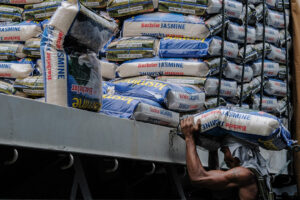Retail inflation, based on the Consumer Price Index (CPI), is likely to have eased between 5.4 per cent and 5.8 per cent in November. The National Statistical Office will officially make the data public on December 12 at 4 p.m.
Retail inflation surged to 6.2 per cent in October. Experts believe that the rate has peaked and is expected to come down because of some reduction in vegetable prices and also better sowing of Rabi crops. However, vegetable and food prices are still elevated, which is why the headline number could be above 5 per cent for the third successive month.
In a note, Barclays opined that the worst quarterly growth readings and peak inflation are now behind us. In Q3 FY2024-25 (Oct-Dec), high-frequency indicators of economic activity show signs of a rebound in momentum. “For November, we expect CPI inflation to moderate to 5.4 per cent from 6.2 per cent in October,” it said while expecting that the MPC (Monetary Policy Committee) to derive comfort from this and cut the policy repo rate by 25bp (basis points, 100 bps mean 1 percentage point) in February.
The higher-than-expected October print was one reason the MPC kept the policy rate unchanged at 6.5 per cent for the eleventh time in a row after its review in December. This also resulted in RBI revising its annual inflation forecast upwards to 4.8 per cent from 4.5 per cent earlier.
According to December’s statement of MPC, headline CPI inflation surged above the upper tolerance level to 6.2 per cent in October from 5.5 per cent in September and sub-4.0 per cent prints in July-August, propelled by a sharp pick-up in food inflation and an uptick in core (CPI excluding food and fuel) inflation. “Going forward, food inflation is likely to soften in Q4 with seasonal easing of vegetables prices and kharif harvest arrivals; and good soil moisture conditions along with comfortable reservoir levels auguring well for rabi production,” it said.
However, adverse weather events and the rise in international agricultural commodity prices pose upside risks to food inflation. Even though energy prices have softened recently, its sustenance needs to be monitored. Businesses expect pressures from input costs to remain elevated and growth in selling prices to accelerate from Q4. Taking all these factors into consideration, CPI inflation for 2024-25 is projected at 4.8 per cent with Q3 at 5.7 per cent; and Q4 at 4.5 per cent, the statement read.
In its research report, SBI said that the outlook for inflation will be largely shaped by the trajectory of food inflation (on the positive side, softening vegetable prices, while on the negative side, adverse weather events and rises in international agricultural prices).
The targeted inflation range in India is 2 to 6 per cent, with a median rate of 4 per cent. Normally, it is believed that a headline number in and around 4 percent gives strength to RBI’s rate-setting panel, MPC, to lower the rate. However, considering the growth situation, there is a strong possibility of a rate cut even if inflation is above 4 per cent but below 5 per cent.







Leave a Comment